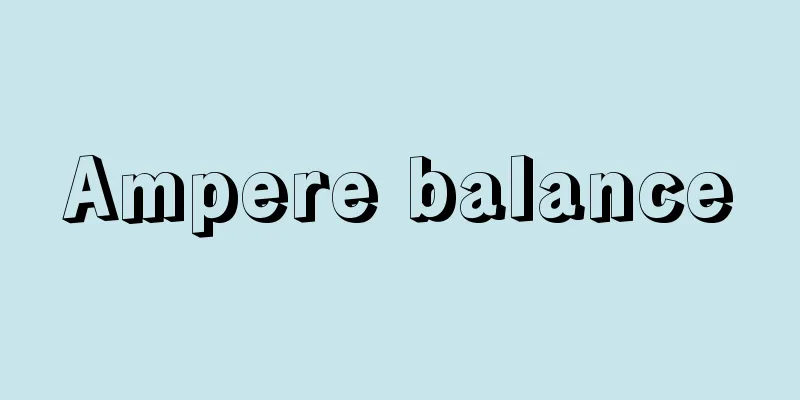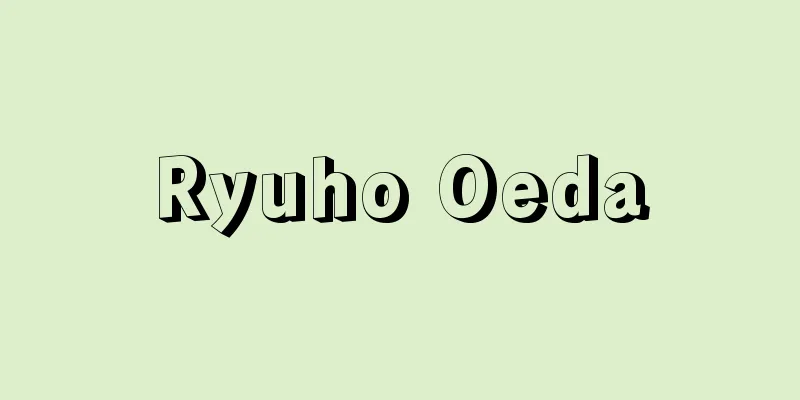Three brush strokes - Sanpitsu

|
Three outstanding calligraphers in the history of Japanese calligraphy. Usually, the Sanbutsu refers to Kukai (Kobo Daishi) from the early Heian period, Emperor Saga, and Tachibana no Hayanari, but their first appearance was in the mid-Edo period, in the Wakan Meisu (Collection of Classical Chinese Calligraphy), edited by Kaibara Ekiken. Kukai and Hasenari went to China in 783 (Enryaku 2) as students. They made an effort to master Tang culture and calligraphy, and produced many calligraphy scrolls, which they presented to Emperor Saga. The strong influence of Chinese calligraphy, especially that of Wang Xizhi, is evident in the unique writings of these Sanbutsu, and they are important in that they built the foundation of the history of Japanese calligraphy. In addition, there is a custom of selecting three calligraphers from each era and calling them the Sanbutsu. [Mitsuharu Kanzaki] The Three Calligraphy Works of the Kan'ei EraThese three men, Hon'ami Koetsu, Konoe Nobutada (Sanmyakuin), and Shokado Shojo (Takimotobo) from the early Edo period, created a new style of calligraphy based on the classics of the ancient period, in opposition to the formulaic style that had been in place up until the Muromachi period. [Mitsuharu Kanzaki] Obaku's Three CalligraphyIn the Edo Shogunate's encouragement of Confucianism, the Ming monk Ingen brought the Obaku sect to Japan, and was also known as Mokuan and Sokuhi. Based on Ming calligraphy, they created a bold and distinctive style, which became a branch of the Obaku school and marked the beginning of the development of the Tang style. [Mitsuharu Kanzaki] Three brushes from the end of the Edo periodIchikawa Beian, Nukina Kaiya, and Maki Ryoko were three people who were active in the late Edo period. All of them were professional calligraphers and were representative calligraphers of the Tang style of the Edo period. [Mitsuharu Kanzaki] Source: Shogakukan Encyclopedia Nipponica About Encyclopedia Nipponica Information | Legend |
|
日本書道史上の、優れた3人の能書家。普通、単に三筆といえば、平安初期の空海(くうかい)(弘法(こうぼう)大師)、嵯峨(さが)天皇、橘逸勢(たちばなのはやなり)をさすが、この初見は江戸中期、貝原益軒編の『和漢名数』である。空海と逸勢は、783年(延暦2)留学生(るがくしょう)として入唐(にっとう)。唐文化と書法の修得に努め、多くの法帖(ほうじょう)を将来して、それらを嵯峨天皇に献上している。この三筆の個性あふれる書の根底には、中国書法、とくに王羲之(おうぎし)の影響が強くみられ、日本書道史の基盤を築いた点で重要な存在である。このほか、各時代ごとに能書家3人を選んで「三筆」とよぶ習わしがある。 [神崎充晴] 寛永の三筆江戸初期の本阿弥光悦(ほんあみこうえつ)、近衛信尹(このえのぶただ)(三藐院(さんみゃくいん))、松花堂昭乗(しょうかどうしょうじょう)(滝本坊(たきもとぼう))をいう。この3人は、室町時代までの型にはまった書に対し、上代様(じょうだいよう)の古典に立脚した新書風を展開し、一時代を築いた。 [神崎充晴] 黄檗の三筆江戸幕府の儒学奨励のもと、黄檗(おうばく)宗をもたらした明(みん)の僧隠元(いんげん)に、木庵(もくあん)、即非(そくひ)を加えてよぶ。彼らは明の書法に基づき、雄渾(ゆうこん)な特色を打ち出して世に黄檗流の一派をなし、唐様(からよう)発展の端緒となった。 [神崎充晴] 幕末の三筆江戸末期に活躍した市河米庵(いちかわべいあん)、貫名海屋(ぬきなかいおく)、巻菱湖(まきりょうこ)の3人。いずれも職業書家として一家をなし、江戸の唐様を代表する能書家である。 [神崎充晴] 出典 小学館 日本大百科全書(ニッポニカ)日本大百科全書(ニッポニカ)について 情報 | 凡例 |
>>: Samhita (English spelling)
Recommend
Kitasenba
...The name of the three Osaka districts in the E...
Phan Chau Trinh
...Vietnamese enlightened nationalist. Also known...
Shasui - Shasui
A Buddhist term. The act of scattering purified wa...
cryptomenorrhea
...It can occur secondary to vaginal ulcers cause...
Khakass language - Khakassgo (English spelling)
A Turkic language. Spoken by 50,000-60,000 Khakass...
Rare element - Kigenso (English spelling)
Elements that exist in relatively small quantitie...
Foreign Service Civil Service Recruitment Intermediate Examination - Gaimukomuinsaiyouchukyuushiken
...However, in the United States, the tradition o...
Are [company] - Are
…Headquarters: Paris. The company was originally ...
Kanoko Shibori
A tie-dye that resembles the white spots on a deer...
Buddha Mother - Butsumo
[1] (noun) Buddhist term. ① The law (dharma) that ...
Ahmet Nedim
A court poet of the Ottoman Empire. Born in Istan...
Usui Zaguri Seishisha - Usui Zaguri Seishisha
…A representative silk-reeling association establ...
Primary dendrite - ichiji dendrite
…The growth rate of the solid phase differs depen...
Crystallography
A general term for the academic field that studie...
Income redistribution - a simple tax
Redistribution of income based on some objective. ...









